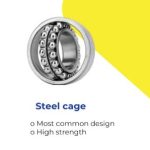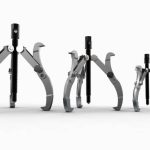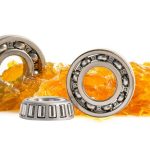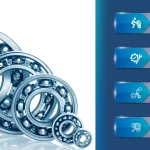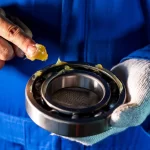Bearings that support a spinning shaft are known as pillow block bearings or Plummer block bearings.
Their mounting surface is in a plane offset from the shaft’s axis and parallel to it. Pillow block bearings’ bases and feet have mounting holes or slots, allowing simple mounting and adjustment.
The majority of pillow block-bearing applications involve low-torque operations. The bearing base or feet have grooves or bores that simplify assembly and adjustment.
NBC Bearings Plummer Blocks have various end covers and seal options to ensure effective sealing.
Types of Pillow Blocks Bearings
Pillow block bearings are classified according to their use in housing construction as follows:- Plain Bearings are utilized in linear applications to control, reduce, or minimize friction. Instead of the rolling movement employed by ball, roller, and needle bearings, they employ a sliding action.
- Ball bearings use a ball as the primary rolling object. In rotary applications, they create a smooth, low-friction motion. An inner and outer ring, as well as balls, are present in ball pillow block bearings. They could have a cage or ball divider attached.
- Roller bearings have the rolling component be a roller. In rotary applications, they create a smooth, low-friction motion. The construction comprises an inner and outer ring, rollers, and typically a cage or roller separator.
- Needle-roller bearings have the rolling part be a needle roller. Although their diameter-to-length ratio is smaller than that of cylindrical roller bearings, they are comparable.
- Hydrodynamic bearings are fluid film bearings that depend on an oil or air film to separate the moving and stationary components. Although maintaining high stiffness, load capacity, and extended bearing life, hydrodynamic pillow bearings are significantly more complicated and expensive than traditional rolling element pillow bearings.
Material Selection for pillow block bearing
- Housing material
-
- Aluminium
- Cast Iron
- Stamped steel
- Plastic
- Stainless steel
- Bearing material
-
- Steel
- Stainless steel
- Sintered metal
- Graphite-metal alloy
How to install pillow block bearing?
The pillow block bearing is relatively simple and easy to install:- Check and clean the shaft
- Position the bearing on the shaft
- Install the housing on the mounting structure by lightly bolting it
- Align to the final mounting structure
- Securely bolt
- Ensure the Axial motion
- Tighten both collar set screws
Pillow Block bearing application
These devices have a wide range of applications because they are extremely adaptable. It is possible to support shafts with one or more bearing units. For instance:- Belt drives connecting motors and pumps
- Long shafts connecting motors and industrial gearboxes
- Conveyor belt roller
- Rolling mills
- Ventilation system
- Paper machine




